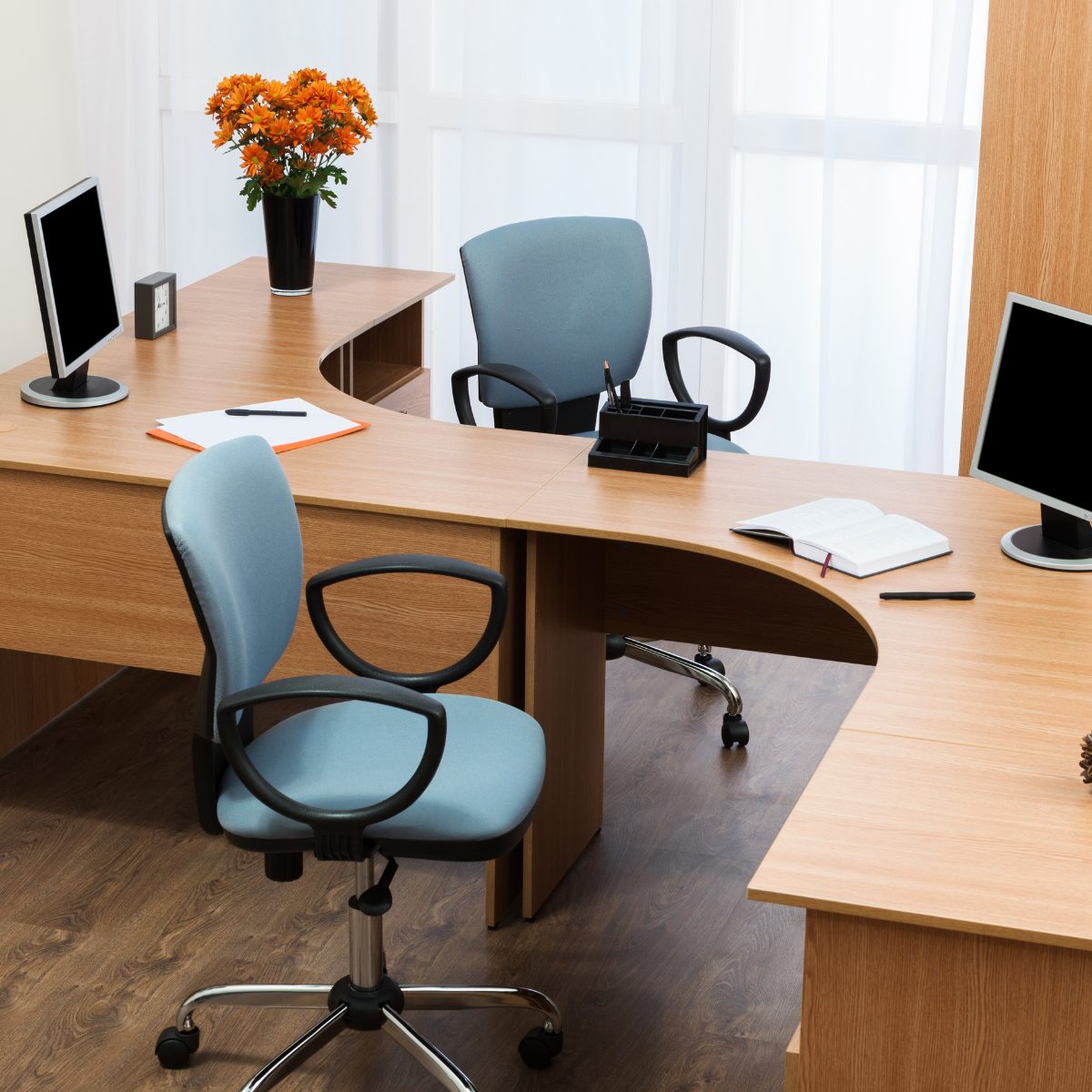How to Pack a Desk for Moving: Quick and Easy Steps

Whether you’re reshuffling a few cubicles or relocating the entire office, moving desks can be a hassle, and the disruption can have an impact far beyond the person who is relocating. Desks are renowned for being heavy, awkwardly shaped, and often laden with electronics – it’s as if they’re engineered to resist being moved. But with a bit of planning and the right tools, it’s definitely possible to move heavy furniture without damaging your floors, your furniture, or yourself.
Here’s a complete, step by step guide on how to approach this task:
1. Preparations Before Moving Your Desk
Before you start randomly shifting furniture around, take some time to plan the operation. You’re going to need to take into account the Destination, the Path, Tools that may be necessary, packing materials to Protect items, and measures to protect your personnel.
- The Destination: Is the target space big enough? Has it been cleared and made ready to receive the new furniture piece?
- The Path: Map out the route, measuring doorways, hallways, and elevators (if applicable). If the desk needs to be disassembled for transit, factor that into your plans.
- Tools: Furniture sliders are a great help when moving small desks, but a heavy desk may need equipment such as hoists and trolleys, as well as extra people.
- Desk Protection: This can range from bubble wrap, packing paper, packing tape and stretch wrap, to specialized furniture blankets.
- Staff Protection: Staff may require back-protection corsets if it’s a matter of moving heavy furniture.
2. Clearing and Wrapping Your Desk
When manhandling a desk you need to be free to try different orientations and probably turn it on its side, which means you must remove any loose articles or desk drawers that could roll out. Therefore you will have to clear the entire desk and box up EVERYTHING you have accumulated at that workstation – electronics, decorations, stationery etc.
Chances are you won’t be the only one moving a desk on the day, and these items could potentially get mixed up with those of colleagues. So carefully pack them up, wrapping electronics in bubble wrap, isolating small accessories in boxes or bags, and appropriately labeling boxes containing delicate items.
Finally, wrap the main body of the desk with packing paper, bubble wrap, or even thick furniture blankets if heavy-duty protection is required or in the case of valuable furniture. Secure everything in place with stretch wrap and packing tape.
Depending on the type of desk and your planned route, you may need to partially or fully disassemble it. In case of removing drawers, shelves, and other detachable elements, this will probably require extraction of screws and other hardware that can easily be lost. Take care to store these in labeled bags for easier reassembly later on.
3. Lifting and Moving Techniques for Desk Relocation
Desk-moving is a departure from the typical employee’s daily routine, introducing physical activity that could lead to injury if not done properly. So your Health and Safety department will thank you for using the right lifting and moving techniques, which should also make the whole process run more smoothly.
- Furniture Sliders: These wonders work magic! Place a slider under each desk leg. The sliders will allow the desk to glide across the floor smoothly, minimizing damage, and significantly reducing the effort needed.
- Teamwork: Lifting a heavy desk solo isn’t recommended. Enlist the help of a friend or colleague. If that’s not possible, consider hiring professional movers for your safety and peace of mind.
- Lift Smart: Don’t overexert yourself – the priority here is to move this desk safely! Lift with your legs, not your back. Maintain proper posture to reduce the risk of strain.
- Dolly/Hand Truck: For very heavy desks, longer moves or a valuable furniture piece, a dolly or hand truck can be a lifesaver. Take extreme care to ensure the desk is securely placed before tilting it.
- Stairs vs. Elevators: If your route involves stairs, assess the weight and size of the desk, and have help on hand before deciding to proceed – some moves necessitate professional movers. If using an elevator, be mindful of weight restrictions, which are commonly posted within the elevator itself.
4. Special Notes for Specific Scenarios
Not all desk moves are the same. If top level management is included in the move we’re probably talking about a large desk or multiple furniture pieces, and the IT team will of course have a greater burden of sensitive electronics. Here’s a quick mention of additional considerations:
- Moving Within a Building vs. Across Locations: Moving a desk across town adds several dimensions of complexity, such as traffic and parking availability. If the route involves an apartment building and older sites may have narrower corridors or steep stairs, and you may have to unload your truck further away than anticipated. Your analysis in Step 1 will determine whether you should consider professional movers.
- Electronics and Fragile Items: If you’ve packed these separately, prioritize keeping them secure during the move. Use suitable packing supplies and label the boxes clearly.
- Don’t Be a Hero: If you’re unsure, err on the side of caution. It’s okay to realize halfway through that you need a safer method for moving a very heavy desk. Sometimes hiring professionals is the best option.
5. Desk Reassembly and Settling In
The move is almost done, but you’re not home free just yet!
Be aware that packing tape, stretch wrap, and protective coverings can leave marks or even damage when being removed. Be particularly careful when cutting them away with a blade. Bubble wrap and packing paper can be surprisingly hard to cut through. When positioning the desk in its designated spot, the furniture sliders will again come in handy for making final adjustments and fine-tuning the placement.
If your desk was disassembled, follow the manufacturer’s instructions for reassembly, and if these aren’t available reverse the steps you took to disassemble the furniture. Make sure all fixtures and fasteners are secure, but not over-tightened.
You know best how to restock your desk just as you had it set up in the previous location, but don’t forget that a move is a good opportunity to improve your setup, which could mean offloading unnecessary clutter or rearranging the layout in a way that is ergonomically beneficial. Also, be aware that when reconnecting electronic devices there is potential for power surges or harm to yourself if done so incorrectly.
Additional Tips for a Smooth Move
- Label Everything: Label all boxes and desk drawers clearly to make unpacking easier
- Measure Doorways and Hallways: Avoid unwelcome surprises on moving day by measuring all entries the desk needs to pass through.
- Communicate: If you’re moving as part of an office relocation, keep communication clear amongst your team to ensure everyone is informed about the moving timeline, sequence and route.
- Avoid Peak Moving Times: If you have some flexibility, avoid moving desks during busy office hours to minimize the risk of accidents and disruption.
- Protect Your Floors: Especially with furniture sliders, place some cardboard or rugs at strategic points to protect floors, particularly when moving heavy furniture.
You know best how to restock your desk just as you had it set up in the previous location, but don’t forget that a move is a good opportunity to improve your setup, which could mean offloading unnecessary clutter or rearranging the layout in an ergonomically beneficial way. Also, be aware that when reconnecting electronic devices there is potential for power surges or harm to yourself if done so incorrectly.
You may find that some of your desks no longer fit or function in your new space. If you’re dealing with excess or outdated pieces, consider liquidation strategies. Discover more about office liquidation to optimize your workspace
When to Hire Moving Professionals
Although it’s possible to move a desk yourself, there are times when professional movers are a safer and more efficient option.
Desks that weigh a ton or have an awkward shape are likely to require specialist equipment, which in turn requires people qualified to use it. Commercial operators will also the appropriate vehicle for moving a large desk, for example, and they’ll have the necessary experience for negotiating tight spaces, including stairs and elevators.
They will be more capable when it comes to loading and unloading the truck, and if the issue is how to move a desk over a longer distance they may even have connections with the authorities that could help when finding a route through heavy traffic.
Putting logistics in the hands of such specialists like Armstrong can make relocation significantly less stressful and relieves you of the need to expose your staff to unnecessary risk, particularly if your office has a preference for heavy furniture.
A commercial specialist, while being better prepared to move a desk safely and well-stocked with packing supplies, is also likely to have the necessary insurance to cover office furniture, electronic equipment and its employees’ wellbeing.
Ensuring a Smooth and Successful Desk Move
A successful and efficient desk move will minimize interruptions to the normal working schedule, proving beneficial to your business and employees alike. Proper planning, utilizing furniture sliders, appropriate packing materials, and safe lifting techniques are essential when considering how to move a desk and ensure that the process is error free. This step by step guide is intended to help you undertake the move independently, but remember, don’t be afraid to ask for help if the move involves a heavy desk – whether from a friend or a professional moving company!
